THE FORCE OF NATURE HERSELF, ALASKA THUNDERFUCK, EXPLAINS WHAT IT TAKES TO BE A DRAG QUEEN.
Alaska Thunderfuck is a hot mess. Her look is reminiscent of Amy Winehouse—an obnoxious blonde beehive that’s disheveled, large eyeliner wings flicked across her eyes that are not only the epitome of captivating, but intense. One look into her deep brown eyes, and it’s as though the world must know what she’s saying.
Her outfit fits the bill —a black pushup bra paired with a literal trash bag styled as a mermaid skirt. Quite simply, the queen is what she had said she aspires to be: trash.
Alaska Thunderfuck —real name, Justin Honard—is a drag queen; not just any queen, but the winner of “RuPaul’s Drag Race: All Stars,” Season Two, as well as a runner-up on the Fifth Season of “RuPaul’s Drag Race.” A graduate from the University of Pittsburgh, Thunderfuck went to school for acting, but says her roots in drag go back to her childhood, when she “was always wearing her grandmother’s clothes.”
She credits her alma mater for developing her broad theatrical repertoire —an essential to have if you’re a drag queen.
“At the University of Pittsburgh, I wasn’t even doing drag,” says Thunderfuck. “I did theatre, I acted in plays.”
At school the curriculum had students constantly evolving—where sewing, creating sets and acting were part of the package. “It was more all-around,” she says. “I wasn’t really doing drag that much, but I still made dresses for myself.”
Looking at Thunderfuck’s background, there’s no question as to why she is a queen—she simply exudes it. Post-performance of her 2016 single, “Stun,” Thunderfuck looks unbothered; sipping white wine, she’s comfortably fabulous in what she calls “the classic Alaska outfit”—trash bag and a “huge nest of hair. That’s it.”
When talking about the art of drag, Thunderfuck compares it to the different categories in a beauty pageant. She breaks it up into three parts: “You have a gown portion, you have swimsuit portion and talent portion,” she says.
Tonight, she credits her trash bag as part of her “gown portion,” and rightfully so; matched with a sleek cross-neck bra and subtle choker, the tout ensemble is something that would walk the runway of one of Alexander Wang’s collections—sexy, mischievous and ready-to-party.
But Alaska’s look is hers, and hers alone —but she’s not looking to settle on one look throughout her career.
“I’m still figuring that out. I like to think of it as a cartoon character,” she says, in terms of an overall-look. “Like Mickey Mouse. He has round eyes and two circles for f**king ears. So, it’s very easy and iconic and recognizable.”
So, if being recognizable is the name of the drag queen game, what would the Alaska drawing consist of?
“The Alaska drawing would be a stick figure, with a huge nest of hair on the top,” she says, pausing for a moment before adding, “and nails.”
Alas, as one of the most-renowned drag queens today, it’s no wonder Thunderfuck is paving her way to success—but without having a growing platform like “RuPaul’s Drag Race” to show the world components of drag culture, would drag queens be recognized as more than just performers, and something more, like fashion figures? As the art of drag grows more mainstream, it’s no wonder publications like Vanity Fair have highlighted “100 Years of Drag Queen Fashion” through viral videos, featuring famous queens like Kim Chi and Detox Icunt displaying the various makeup looks – drag is its own fashion niche, unapologetically proud of its fierce, witty self.
After all, RuPaul did tell the world to sashay and shante their way into drag culture, with her hit “Supermodel,” back in 1993. It was the beginning of an era —and nothing was the same after.
For those who aren’t immersed in drag culture, “RuPaul’s Drag Race” is just what reality TV sets out to do —entertain. According to Nathaniel Simmons’ essay, “Speaking Like A Queen In RuPaul’s Drag Race: Towards a Speech Code of American Drag Queens,” it was the first television show that focused on drag queens. “RuPaul’s Drag Race” is not only a refreshing dose of reality TV, but a cutthroat competition for who has what it takes to be an heir of their fellow host, whom they lovingly call, “Mama Ru.”
In the show, 13 queens compete through various challenges that test multiple skills, such as sewing (seeing seams is a big no-no, and the outfit better not look cheap, henny), to lip-syncing pop songs “for their legacy!”—to the seasonal staple, the “Snatch Game,” where each queen is able to compete as a famous celebrity. Some popular “Snatch Game” contestants include the ever-so-animated Liza Minelli, or a glamorous, sharp-witted Cher, to somewhat-clueless Britney Spears.
Looking at the list of demands for what it takes to be a successful drag queen on RPDR, one might argue that drag requires more than one may think. Besides the challenges themselves, hair, makeup, and fashion play a crucial component in being the ultimate queen.
After all, queen Alaska likes to give herself “at least three hours” to get ready.“And I’m still rushing by the end,” she adds.
But drag digs deeper than just the layers of makeup, fake nails and glitzy getups; according to J. Cormier Briggs’ Outlook Ohio Magazine profile “Drag: A History,” drag dates back to the Middle Ages, where it had been used in Greek theater, as well as Elizabethan England. Briggs acknowledged that drag was essential to “challenging social norms,” as well as asking questions about gender and sexuality.
In a way, drag is still applying those concepts today; challenging social norms is evident in drag queens, and gender is only a construct in drag culture —everyone is a queen, and there are no restrictions that state otherwise.
Perhaps it is why drag and fashion have the relationship that they do; unafraid to turn heads, both subjects are about making a statement through freedom of expression. There is a sense of care and attention that go into the looks that queens create for themselves —and each is unique to their own preferred genre.
When creating a look, every queen has different paint in their palate; some go for gaudy couture, like Chicago’s own Kim Chi, who, at a RPDR viewing party at Roscoe’s on April 8, 2017, told the crowd that all of her outfits are custom-made. Her selection that night featured a frilly, Bo Peep-inspired frock, as well as a flowy, white gown complete with delicate diamond appliqué.
Others will show off every curve —or expertise padding job, like Detox, whose performance had the crowd literally throwing their money at her. Her looks that night included a cobalt mesh body-con dress, complete with a neon bra and panty set underneath, as well as a metallic bob wig, a mix between an extraterrestrial Cher and exotic flapper —a look that Detox called, “Comfortable and untucked.”
Alaska donned a sleek, Hepburn-fitted black dress with matching beret, looking like a killer Bardot (she credited this look to Valentina, a Season Nine contestant whose look typically consists of a black turtleneck and matching beret). She performed in her signature trash-and-bra get-up, complete with a ribbon-decorated microphone, an homage to one of her idols, Stevie Nicks.
Each queen’s look, personality and act is one that’s as distinguishable as it is entertaining. They know what works for them, and what doesn’t. But to those who think it’s a career that’s easily pursued, Alaska would say otherwise; for drag, like fashion, is an interest that requires diligence and care. It’s part of the person themselves.
“Nowadays, you have a lot of queens who are choosing it as a career path, which is so absurd to me,” says Alaska. “Because, you don’t really choose to do it—it’s just who you are.”

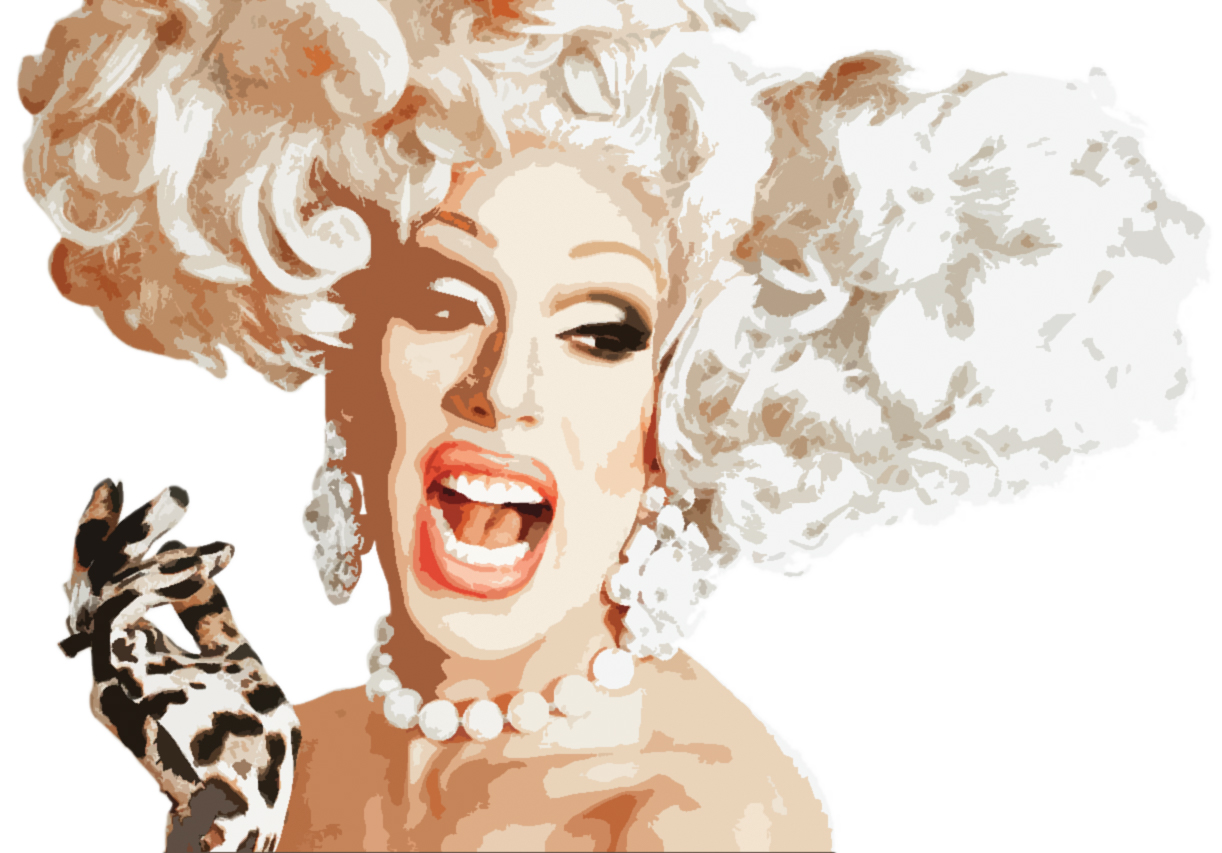
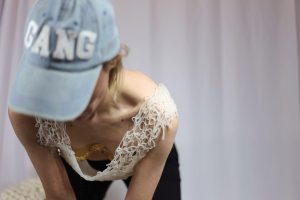
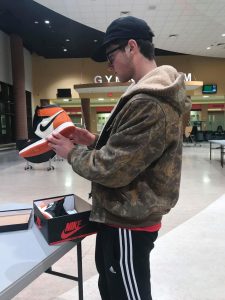


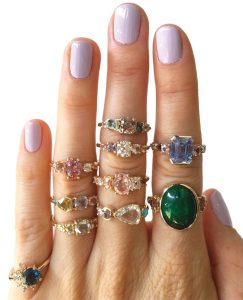

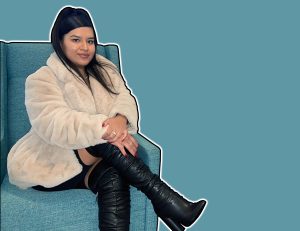
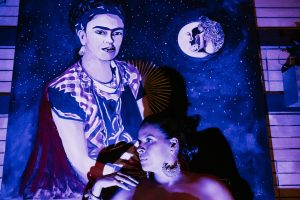
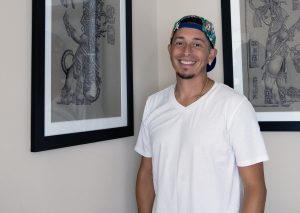
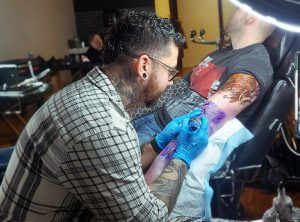
Be First to Comment